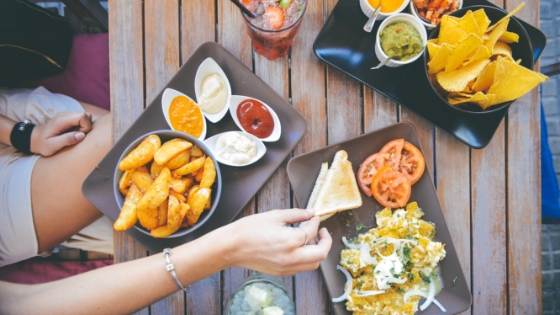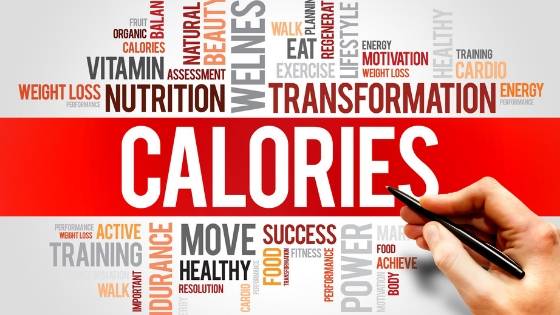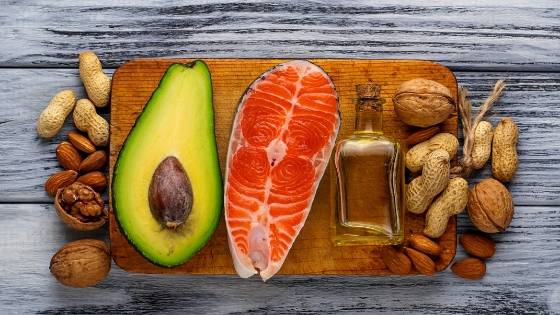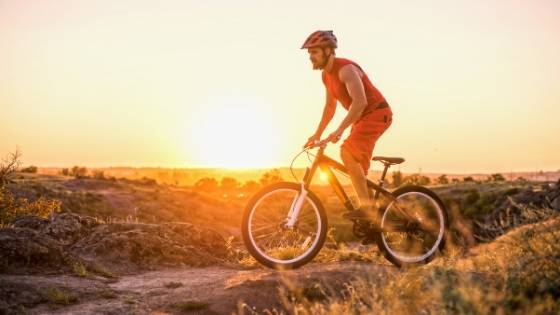
Cycling can be a great way to manage or maintain your body weight and can help towards dropping pounds. Cycling can give you the ability to experiment with your diet. There’s a lot of advice out there, but our bodies don’t work or respond the same. You want to discover what works for your body.
Cyclists need to be conscious of the number of calories they are consuming compared to the amount of calories they are burning during a bike ride. The average adult needs between 2000 and 2500 calories everyday to maintain a healthy body weight. Generally, cyclist burns 660 calories for 1 hour of moderate cycling so if you eat over 3000 calories everyday you will gain weight.
The temptation to eat whatever you fancy is high when you being cycling, but those additional calories can soon add up and have the opposite effect. However, if you understand what calories are and how to create a balanced diet, you can have those treat more often.
Table of Contents
What exactly is a calorie?
A calorie is a unit of energy, specifically the energy required to increase the temperature of 1 gram of water by 1 degree Celsius. It is a unit of energy that your body uses for all its process. When speaking about calories concerning nutrition, it’s referring to the amount of energy you receive from foods.

How many calories a food contains will depend on its macronutrient profile. Carbohydrates and proteins contain 4 calories per 1 gram, and fat contains 9 calories per 1 gram.
For example; if you’re eating a salmon fillet that weighs 200grams, it contains 24 grams of fat (216 calories), 50 grams of protein (200 calories) and 0 grams of carbohydrate. In total, you are getting 416 calories from that 1 fillet.
Macronutrients
The nutrients we consume through food, drink and supplements can be divided into two categories;
- Macronutrients
- Micronutrients
There are three primary macros:
- Proteins
- Carbohydrates
- Fats
You need to consume these in large amounts to live, thrive and perform optimally, especially during cycling. Each macronutrient has its particular role and purposes in the body;
- Hormone production
- Energy
- Muscle growth
- Repair
- Development
You will learn about each macronutrient where they come from, what they do in the body, and why it is essential to incorporate each one into a well-balanced diet.
Carbohydrates
Carbohydrates are the body’s preferred fuel source, and they are broken down into glucose which provides energy to your muscles, brain and nervous system. If the body doesn’t require glucose (while at rest), it will store the energy as glycogen int the muscles and liver.
The average person can store around 350-500 grams of glycogen in the muscles and up to about 100g in the liver. This is where overconsumption of carbohydrates with inactivity becomes a problem because once your glycogen stores are full, the glucose will be pushed into and stored in the fat cells.

Complex and simple carbohydrates
Carbohydrates are categorised into starches (complex) and sugars (simple). Complex carbohydrates are made up of multiple sugar molecules connected together and typically contain fibre, vitamins, minerals and antioxidants. Simple carbohydrates are made up of just one or two sugar molecules and generally are found in processed and refined foods that provide little to no nutritional value.
Both types of carbohydrate are broken down into glucose, but complex carbohydrates take longer to digest and absorb. They are creating a steadier rise in blood sugar, therefore, an extended energy release. Simple carbohydrates are broken quicker, causing a spike in blood sugar, giving a fast energy boost.
Making smart choices and eating more complex carbohydrates that have a high fibre content will keep you feeling fuller for longer. The slower release of energy can help you cycle further for longer.
Carbohydrates are not an essential nutrient, meaning they are not a necessity for your body to survive. As mentioned, they are your bodies preferred source of fuel. Therefore, it is recommended to keep a sufficient amount in your diet to fuel your cycling routine.
Carbohydrates per 100g
| Food Source | Carbs per 100g | Calories per 100g | Fibre per 100g |
| Sweet potato | 20 | 86 | 3 |
| White potato | 16 | 69 | 2.4 |
| Brown rice | 77 | 370 | 3.5 |
| White rice | 80 | 365 | 1.3 |
| Jasmine rice | 85.7 | 381 | 1.2 |
| Rolled oats | 60 | 355 | 9 |
| Brown pasta | 62.2 | 334 | 7.2 |
| White pasta | 73 | 360 | 2.6 |
| Brown bread | 41 | 247 | 7 |
| White bread | 49 | 265 | 2.7 |
| Brown pitta | 44.5 | 240 | 6.4 |
| White pitta | 50.3 | 251 | 3.1 |
| Quinoa | 64.2 | 368 | 7 |
| Couscous | 77.4 | 376 | 5 |
| Cornflakes | 84 | 357 | 3.3 |
| Branflakes | 79 | 318 | 18 |
| Weetabix | 69 | 362 | 10 |
| Shredded wheat | 79 | 318 | 12 |
| Apple | 14 | 52 | 2.4 |
| Banana | 23 | 89 | 2.6 |
| Orange | 12 | 47 | 2.4 |
| Kiwi | 15 | 61 | 3 |
Protein
Protein is an essential macronutrient, indicating you need to consume it to survive, which is responsible for the growth and repair of body tissues. The body’s structural components such as the muscles, skin, bones and organs are all made up by proteins.
Protein is required to make up hormones and enzymes that regulate the bodily process and chemical reactions. If you do not consume adequate carbohydrates and fats, the body can breakdown protein and turn it to
glucose to use as energy through a process called gluconeogenesis. You want to avoid this from happening as your muscles tissue will suffer.
Amino acids
Proteins are made up of amino acids, and these are referred to as the building blocks. There are 20 amino acids demanded by your body. However, only 8 are considered essential and are the ones that the body cannot synthesise, meaning you must get them from external sources, mainly food or supplements. Your body can produce the other 12 and are considered non-essential.
Complete and incomplete proteins
There are two categories of proteins; complete proteins and incomplete proteins. A complete protein is one that contains all of the essential amino acids and will come from animal sources;
- Meat
- Fish
- Eggs
- Dairy
An incomplete protein is one that lacks one or more essential amino acid and will come from plant sources. A vegetarian or vegan diet should include a wide variety of plant proteins combined to ensure a satisfactory amount of the essential amino acids. Keeping a moderate to high intake of protein in the diet is vital when trying to increase muscle endurance for cycling.
Higher protein meals have also been proven to be more satiatingthan high carb meals. You will feel fuller for longer, and it is the most thermogenic macronutrient which means your body must use more energy (calories) breaking down and processing proteins.
Protein per 100g
| Food Source | Protein per 100g | Calories per 100g |
| Chicken breast | 24 | 106 |
| Chicken thigh | 17.6 | 230 |
| Turkey breast | 28.7 | 132 |
| Cod fillet | 17.9 | 80 |
| Haddock fillet | 18.4 | 77 |
| Tilapia fillet | 26 | 129 |
| Tuna steak | 26 | 118 |
| Salmon fillet | 25.3 | 209 |
| Sirloin steak | 21.6 | 209 |
| Fillet steak | 20.9 | 155 |
| Rump steak | 20.7 | 174 |
| Mince beef (5% fat) | 20.8 | 124 |
| Mince lamb (20% fat) | 16.8 | 246 |
| Lamb chop | 18.5 | 244 |
| Pork loin | 19.9 | 225 |
| Gammon steak | 17.6 | 183 |
| Chicken egg | 12.6 | 131 |
| Duck egg | 14.3 | 163 |
| Cottage cheese | 9.5 | 105 |
| Quinoa | 13.1 | 368 |
| Red kidney beans | 6.9 | 117 |
| Butter beans | 5.9 | 89 |
| Chickpeas | 7.2 | 128 |
| Fava beams | 8 | 88 |
Fats
Dietary fat is an essential macronutrient and therefore, should be a critical part of your diet. Fat is used for many significant roles and functions inside the body;
- Energy supply
- Hormone regulation
- Vitamin absorption
- Brain development
- Nerve function
- Organ and cell protection
- Maintaining body temperatures
Saturated, unsaturated and trans fats
There are three types of fat;
- Saturated
- Unsaturated
- Trans fats

Saturated fats
Mainly come from animal sources like meats and dairy products and are essential in the body for healthy brain function and keeping a robust immune system. Even though the myth that saturated fats cause heart disease is still around today, there are still no studies that show a direct link between the two.
Saturated fats are excellent for cooking with due to their high smoke point, implying they are highly resistant to heat damage. Coconut oil, butter and ghee are usually the best choices. Foods that are naturally high in saturated fats like organic meats, eggs, coconuts and dark chocolate. These foods are commonly healthy and nutritious as they also contain high levels of antioxidants, minerals and vitamins.
Unsaturated fats
Are the healthiest of fats and can be categorised into Polyunsaturated and Monounsaturated.
Polyunsaturated fats
Polyunsaturated fats provide essential fatty acids that your body needs but cannot produce itself. These are;
- Omega 3
- Omega 6
Omega 3 is good for heart health and are found in oily fish, organic red meats and plant sources like nuts and seeds.
Omega 6 is good for cardiovascular health and are found in nuts, seeds and different oils.
Omega 3 has an anti-inflammatory effect, whereas Omega 6 has a pro-inflammatory effect. Some inflammation is necessary for the body, but too much can be very damaging to health. The ideal balance is 3 omega 6:1 omega 3.
Monounsaturated fats
Monounsaturated fats can help improve cholesterol levels, lower the risk of heart disease and strokes and improve insulin sensitivity. These are located in most nuts and seeds, avocados, red meats, olives, and different oils.
Trans fats
Trans fats, or hydrogenated fats, are the fats to be aware of and should be withdrawn from your diet. These are artificial fats created in an industrial process. They are easy to use, very cheap to produce and last a long time.
Because of these reasons, they are added to most processed foods to give them the desired tastes and textures. When putting together with refined carbohydrates, it makes for a highly palatable food that usually leaves us craving more, thus leading to overeating.
Consuming trans fats raises the levels of bad cholesterol while lowering the levels of good cholesterol which can increase the risk of heart disease. Some studies also show that trans fats increase inflammation the body which, as stated before, can be detrimental to health.
Fats per 100g
| Food Source | Fat per 100g | Sat Fat per 100g | Calories per 100g |
| Sirloin steak | 12.7 | 5.6 | 201 |
| Fillet steak | 7.6 | 3.8 | 155 |
| Rump steak | 10 | 4.2 | 171 |
| Salmon fillet | 12 | 1.6 | 209 |
| Mackerel fillet | 19.1 | 4.3 | 259 |
| Sardines | 9.6 | 3.2 | 173 |
| Lamb chop | 18.9 | 9.6 | 244 |
| Mince lamb | 19.8 | 9.5 | 245 |
| Pork loin | 16.1 | 5.9 | 225 |
| Chicken egg | 9 | 2.5 | 131 |
| Cheddar cheese | 34.9 | 21.7 | 416 |
| Mozzarella cheese | 18 | 12.7 | 236 |
| Avocado | 19.5 | 4.1 | 198 |
| Walnuts | 65.2 | 6.1 | 689 |
| Almonds | 55.8 | 4.4 | 629 |
| Pecans | 70.1 | 5.7 | 706 |
| Pistachio | 44.8 | 5.5 | 585 |
| Sunflower seeds | 51.5 | 4.5 | 610 |
| Chia seeds | 30.7 | 3.3 | 580 |
| Flax seeds | 42.2 | 3.7 | 514 |
| Olives | 12.8 | 2.5 | 138 |
| Olive oil | 100 | 14.3 | 900 |
| Coconut oil | 100 | 87 | 900 |
| Butter | 82.2 | 52.1 | 745 |
| Dark chocolate | 42.9 | 26.4 | 528 |
How many calories can you burn in 1 hour?
More than 80% of your condition is a result of what you eat and how much. The rest is broken down to how much you burn and how good of a sleep you receive each night.

The average cyclists will burn between 350 calories and 650 calories in one hour. However, there are many different factors involved to get an accurate figure. For a true reading, I always wear a heart monitor around my chest and an app to hold the data. I find this is the only way you will find your personal output of energy over your ride.
Calories in vs calories out which is easier?
I always find it easier to control the calories in because it’s incredibly challenging to burn huge amounts of calories. Your body is designed to prevent you from consuming all of your calories which could potentially lead to death. Your body will slow down your metabolism to protect its self, and over time it becomes harder to burn calories.
How long does it take to burn 10,000 calories?
GCN tested this theory and discovered it took them 12 hours of continuous riding to burn 10,000 calories. I would suggest to the average person this would be nearly impossible to achieve, especially frequently.
It’s all about balance
If you want to eat whatever you like without gaining to much weight you will have to burn a lot of calories on the bike. For best results, a well-balanced diet will provide you with the energy to have some great rides and allow you to recover. The more you cycle, the more you can consume but eat the wrong kind of foods might result in poor performance.


